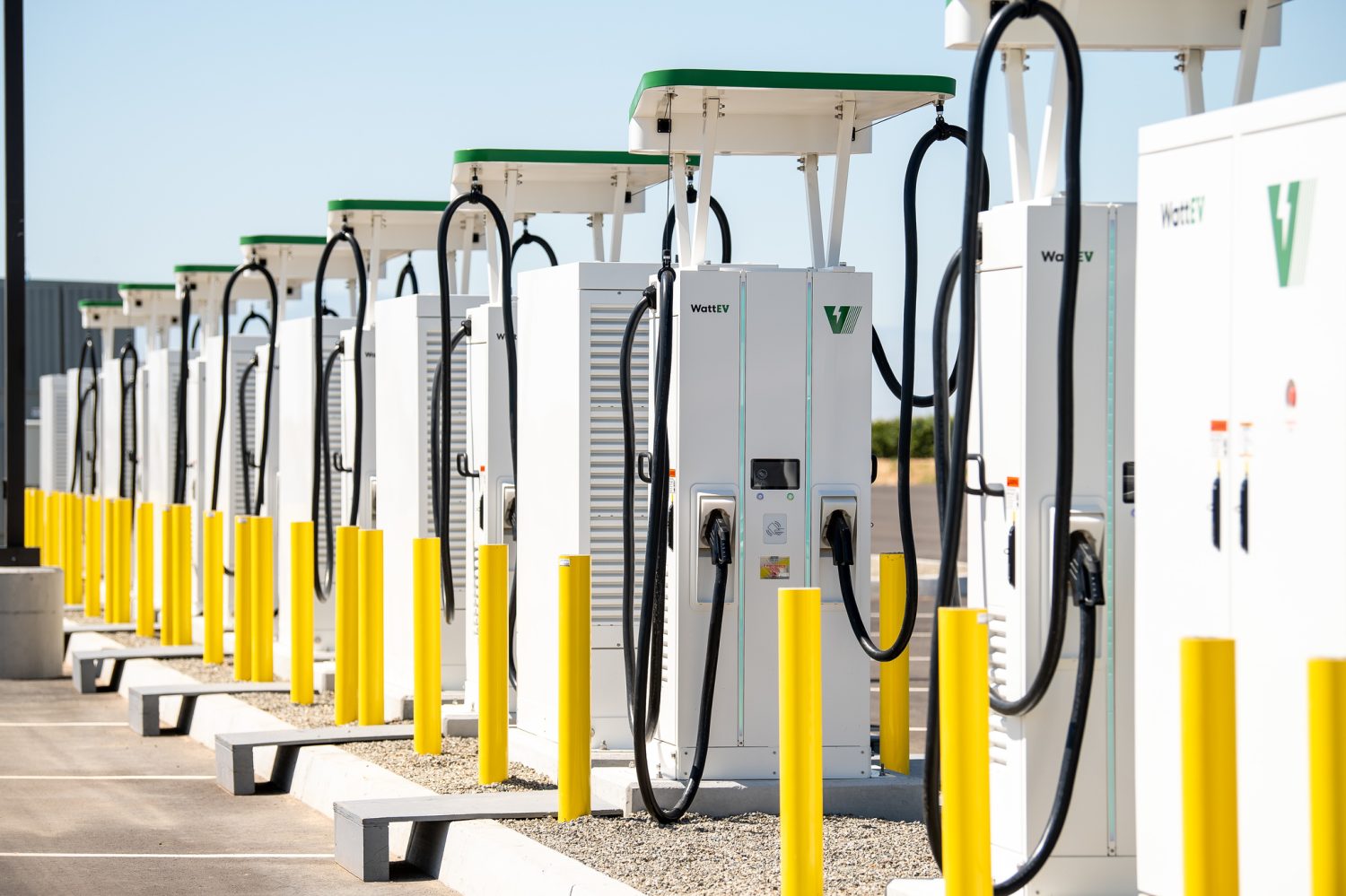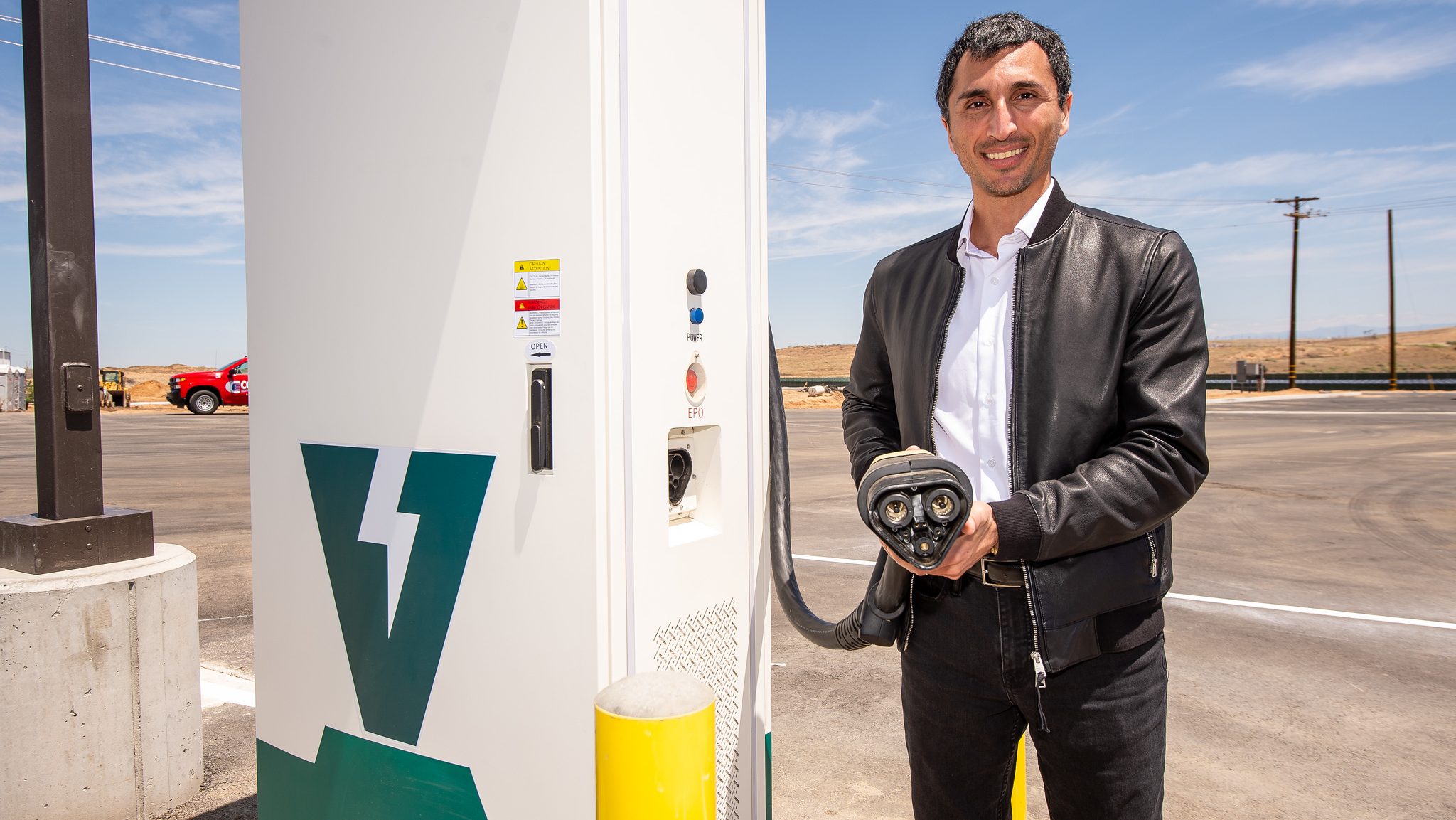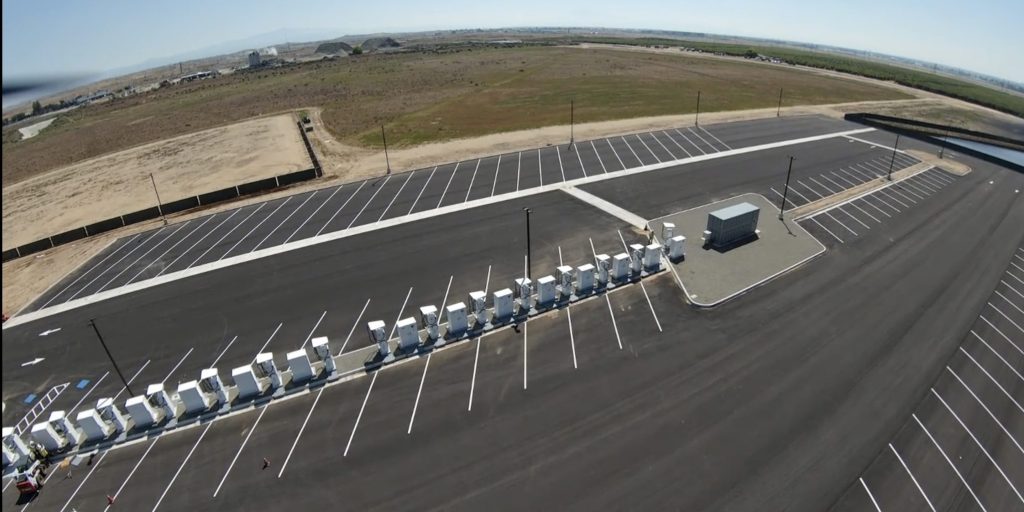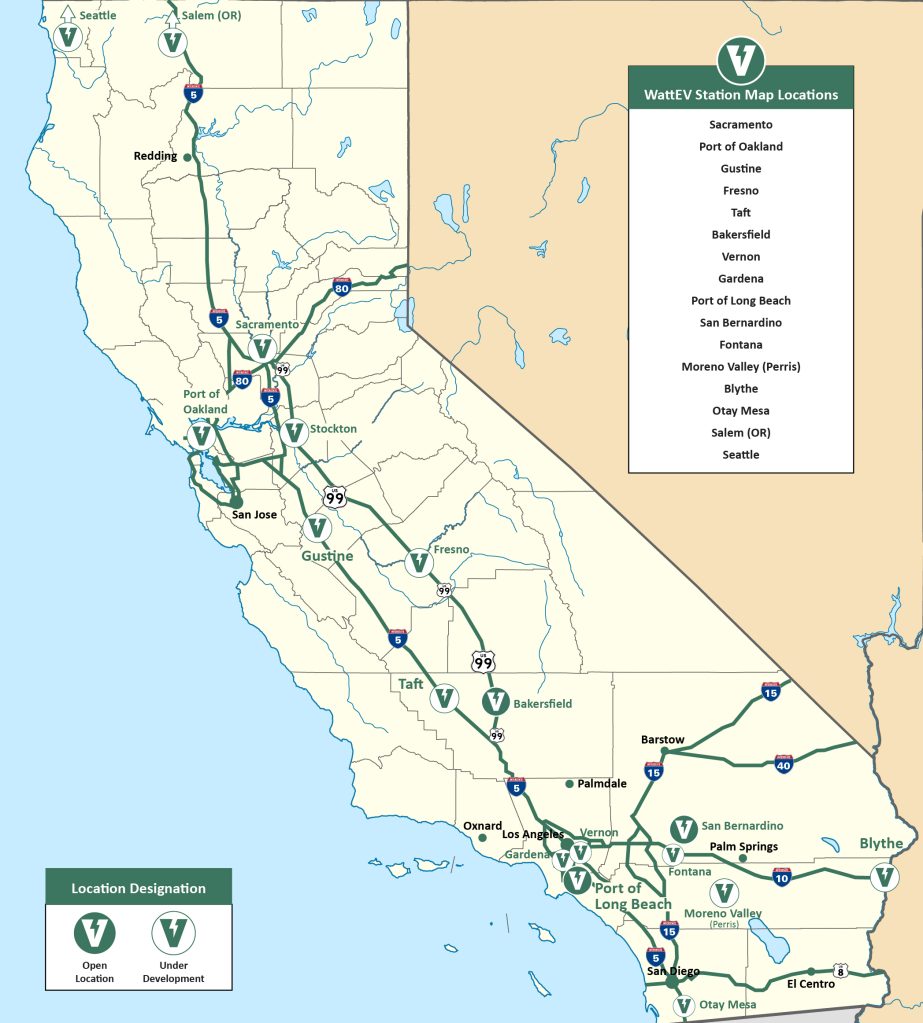
WattEV has just opened the first electric truck charging depot in the US to use the new Megawatt Charge System, capable of delivering up to 1.2 megawatts of power, currently the highest-speed charger available in the US, along with solar and battery backup on-site and a unique partially grid-islanded setup.
WattEV says that its charge depot in Bakersfield, CA, includes the first MCS charger in North America, and the fastest as well. Tesla has a number of its own 750kW chargers deployed “behind-the-fence” in Pepsi and Tesla facilities, but this 1.2MW charger beats those in speed and is also publicly available.
MCS is a new charge standard being worked on by charging standards organization CharIN. The standard is close to being finished, though currently there aren’t really available MCS-capable trucks, or even UL-certified charging units.

As a result, WattEV’s installation is somewhat of an experiment. The site has 50 total chargers, split between 32 grid-tied 360kW CCS chargers on one side, and 3 1.2MW MCS and 15 240kW CCS chargers on the other side, attached to backup batteries and solar and fully grid-islanded.
That latter part is particularly interesting – WattEV got grants from the California Energy Commission to create this grid-islanded setup, wherein power for the chargers is fully provided by 5MW of on-site solar (which WattEV wants to expand to 25MW eventually) and 3MWh of battery backup.


WattEV could connect the setup to the grid, but between its grant from CEC, the lack of UL-certified MCS chargers, and delays that would have been caused in the permitting and interconnection process, it decided that grid-islanding half of the site would be the right decision for the time being.
The inclusion of an MCS charger promises the ability to fill a truck in the same time as a traditional truck rest stop. While trucks don’t currently have 1.2MW charging capability, WattEV wanted to be ready for when they do.
Notably, something many operators bring up is that they’re waiting for chargers before they start building or buying trucks. Here, however, we have an infrastructure provider out in the lead – building infrastructure before trucks are being built or purchased. In a world where operators have gotten used to using infrastructure as an excuse, WattEV seems uninterested in allowing them to continue to use that excuse.

Like WattEV’s other chargers, this one will be publicly available either via membership or scanning a credit card/QR code at the site. It’s near an industrial park in Bakersfield with several distribution centers and near the 99 freeway, which services the California central valley. WattEV also offers a “truck-as-a-service” model, wherein the company offers electric trucking at a set price with lower startup costs.
The charger could be of use for those distribution centers, bringing goods in from the Ports of Los Angeles and Long Beach, and also for traffic in the valley, as there are many local farming facilities and produce delivery services (for example, OK Produce in Fresno, which has committed to full zero emission operations).
FTC: We use income earning auto affiliate links. More.


